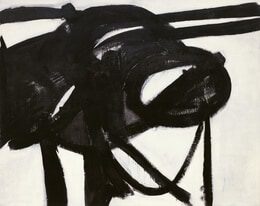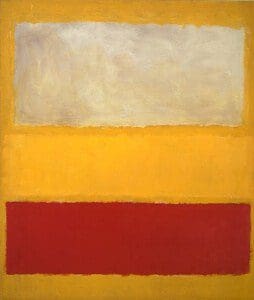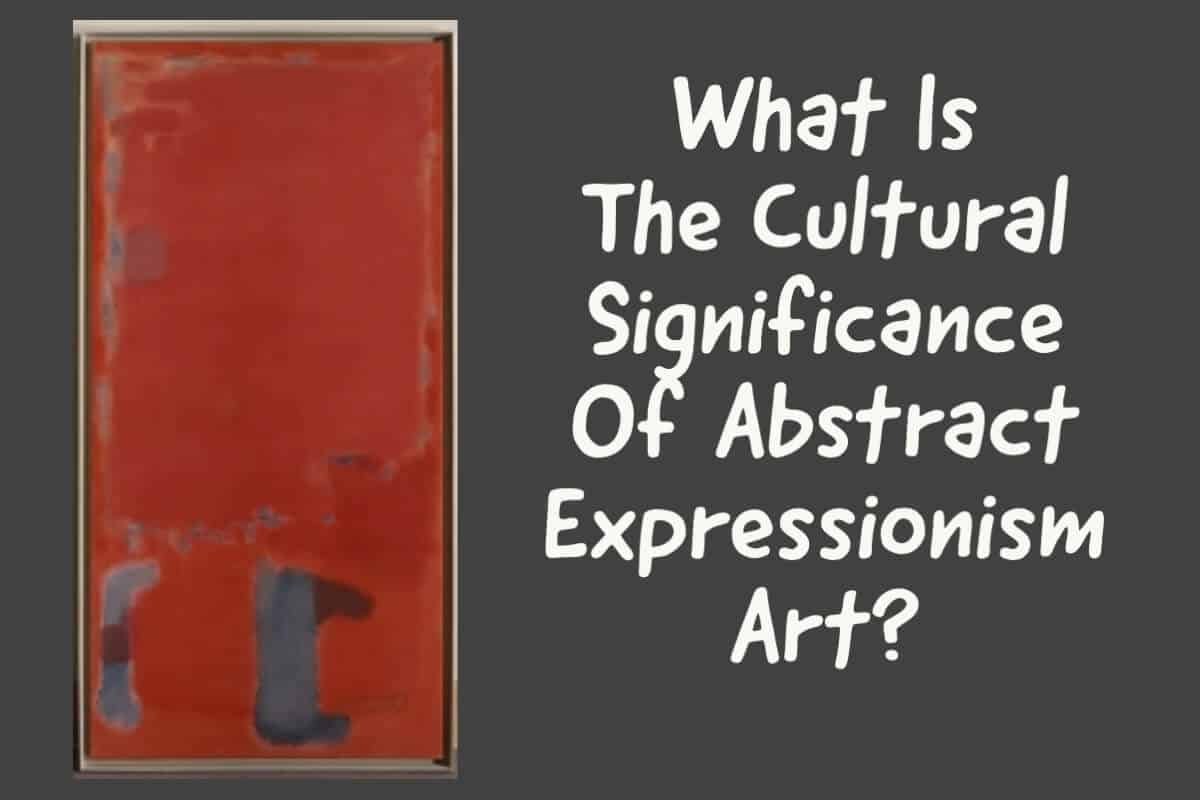Abstract Expressionism was one of the art movements that really changed the way art was produced. The artists in this art movement changed how art was expressed and viewed.
The cultural significance of abstract expressionism art is that it was a forerunner for the cultural changes in the United States in the 1950s and 1960s. The Abstract Expressionism movement started after World War II in the 1940s and continued into the 1950s. The world saw significant cultural shifts in the 1950s and the 1960s.
Table of Contents
- Abstract Expressionism Art
- Modern Culture and Abstract Expressionism
- Frequently Asked Questions
- Related Questions

Abstract Expressionism Art
The Abstract Expressionism art movement started after World War 11 in New York City in the 1940s. It was the first significant American art movement that also put New York City on the map as a significant world art center.
The Abstract Expressionism movement was not just an art movement that influenced art in America. It signified a huge cultural shift that was about to occur in America and Europe.
In the 1940s, when Abstract Expressionism started, few galleries were willing to show the work of what was considered an American avant-garde group of artists at the time. By the 1950s, Abstract Expressionism became the dominant art trend.

Major Abstract Expressionism Artists
The major American Abstract Expressionism artists included Jackson Pollock, Willem de Kooning, Franz Kline, and Mark Rothko.
Other artists that also influenced this art movement were Joan Mitchell, Clyfford Still, Philip Guston, Helen Frankenthaler, Barnett Newman, Adolph Gottlieb, Robert Motherwell, Lee Krasner, Bradley Walker Tomlin, William Baziotes, Ad Reinhart, Richard Pouesette-Dart, Elaine de Kooning, and Jack Tworkov. Most of these artists lived, worked, and exhibited in New York City.
Abstract Expressionism Comprises Of Many Styles
The term Abstract Expressionism is not a very accurate term or description to describe these many artists’ works. This is because the abstract expressionism movement comprises many different painting styles in both technique, quality, and artistic expression.
Characteristics of Abstract Expressionism
Here are some very broad characteristics that helped define the Abstract Expressionism movement:
- Abstraction – The artist would use various degrees of abstraction. The forms were depicted unrealistically, or forms that were nonobjective in nature.
- Free, spontaneous, and emotional – The artists emphasized free, spontaneous, and artistic expression that was personal and emotional.
- Freedom in technique – There was a lot of freedom in the kinds of artistic techniques the artists used.
- Emphasis on Paint – The art emphasized the physical characteristics of the paint used for their artistic expression, such as sensuousness, dynamism, violence, mystery, etc.
- A Force of Creative Unconsciousness – The paint application was unstudied and intuitive, almost like a psychic improvisation. It was about expressing the force of the creative unconscious in their art.
- Abandonment of Structured Composition – Abstract Expressionism artists abandoned the structured artistic composition of the day but instead produced unstructured art.
- Large canvases – Their paintings usually filled vast canvases to give the ultimate visual effect and artistic power.

Different Art Approached Within Abstract Expressionism
Abstract Expressionism was not just one kind of approach to art. Within Abstract Expressionism, there were also three different approaches to art.
Here are the three different Abstract Expressionism art approaches:
- Action Painting – Action painting is the loose but rapid paint handling by brush strokes, dripping, or spilling the paint onto the canvas. Jackson Pollock used action painting to drip or spill complex paints on the canvas. Willem de Kooning used vigorous brushstrokes to build up color and texture on the canvas.
- Abstract Expressionism Middle Ground Approach– Abstract Expressionism’s artistic middle ground of art also had various styles from more lyrical, delicate imagery and fluid shapes. Some of the artists more in this middle ground were Philip Guston, Helen Frankenthaler, Robert Motherwell, and Adolph Gottlieb.
- Least Emotional Expressive Approach – The third approach had less of an emotional approach. Mark Rothko, Barnett Newman, and Ad Reinhart were the main artists in this. Their paintings used vast areas or fields with flat colors and then thin, diaphanous paintings to achieve a quiet, subtle, and meditative effect.
As all three of these kinds of painting approaches are considered Abstract Expressionism, this is why sometimes it can be confusing as there are also different kinds of painting styles even within the Abstract Expressionism movement.

Modern Culture and Abstract Expressionism
Abstract expressionism art was a prelude to the world’s culture changing forever. This change was taking place rapidly in the United States during both the 1950s and 1960s. The Abstract Expressionism artists in New York City were the artistic frontrunners who showed us that art and the world would change forever; there was no going back, and the change would continue to happen rapidly.
Significant Cultural Shifts and Abstract Expressionism Movement
Here are some of the significant changes, cultural shifts, and events that took place in the United States and the world in the 1950s and 1960s:
| The 1950s | The 1960s |
| Baby Boom (77 million baby boomers born) | The U.S. Cuban Missle Crisis and Bay of Pigs Invasion |
| Economic Boom in the United States | Hippies Culture Grew, including the Summer of Love (1967) |
| People moved away from the city to the suburbs | The Vietnam War, The War Protests, and Vietnam War Drafts. |
| The Civil Rights Movement started | The continued fight for Civil Rights |
| The Cold War Started | Riots and protests throughout the United States |
| Television became popular | 1963 Equal Pay Act for Women. More women started working outside the home. |
| Music Changed With Elvis Presley and others | Alaska and Hawaii became part of the United States |
| Korean War – North Korea broke off from South Korea | Beatles music became popular |
| First Business Computer Developed (UNIVAC) | The iconic Woodstock Summer Festival (1969) |
| Alaska and Hawaii become part of the United States | A lot of sex, drugs, and rock ‘n roll |
As you can see, the 1950s and 60s brought many significant events and cultural changes in the United States. Many of these cultural changes are still evident, even today.
Anyone who’s lived through the 1960s may tell you it was a wild time. Many things were going on, such as the hippie movement, recreational drugs, riots, and protests.
Abstract Expressionism Was A Reaction to Cultural and Political Events
I see the “wild and untamed” abstract expressionism art movement as a prelude to many cultural events and changes in the United States. Jackson Pollock’s artwork was wild and emotional, almost like a drug-filled art fest; it certainly was art that was not normal for its day.
During the 1950s and 1960s, children were going in the direction of life opposite of their parents. Women were starting to go out of the home to work. Mass demonstrations were taking place on the streets about civil rights and the Vietnam War. Hippies were living together in communes; recreational drugs as LSD were popular.
This change affected not only the more significant cities’ culture as New York City but also the suburbs and smaller cities and towns. The change was dramatic and took place throughout America and Europe.
The abstract expressionist artists changed how art was viewed and how art was produced. The world culture changed forever in the 1950s and, in particular, the 1960s. In short, the Abstract Expressionism artists showed us that art and the world would change forever.
Anita Louise Art is dedicated to art education, great artists, and inspiring others to find and create their art. We love art that uplifts and inspires. #ArtToMakeYouSmile! #ArtToMakeYouHappy!
If you want to see any of my art, you can find out more by clicking here. If you are interested in what inspires me and my paintings, you can discover more by clicking here.
We have a free newsletter and would love you to be part of our community; you can subscribe to the newsletter by clicking here. I would be happy to talk to you if you have any questions. You can reach me, Anita, by clicking here.
Subscribe to our Anita Louise Art YouTube Channel filled with great videos and information by clicking here.
Join us for our podcast “5 Minutes With Art.” Spend 5 minutes a week with us to discover and learn about great art and artists. You can find out more about our podcast by clicking here.
Frequently Asked Questions
What is Abstract Expressionism, and how does it differ from other art movements?
Abstract Expressionism is an art movement that emerged in the mid-20th century, characterized by non-representational and spontaneous forms of expression. It differs from other movements by focusing on the artist’s emotional and psychological state rather than recognizable subject matter.
How did Abstract Expressionism contribute to the cultural changes in the United States during the 1950s and 1960s?
Abstract Expressionism played a pivotal role in shaping the cultural landscape of the post-World War II era. Its emphasis on individual expression and freedom resonated with the spirit of change and experimentation that marked the 1950s and 1960s in the United States.
Who were some key artists associated with Abstract Expressionism, and how did their work impact the movement’s cultural significance?
Artists like Jackson Pollock, Willem de Kooning, and Mark Rothko were key figures in Abstract Expressionism. Their innovative techniques and profound artworks contributed to the movement’s cultural significance by challenging traditional artistic norms.
How did Abstract Expressionism break away from conventional artistic methods, and what techniques were commonly used by artists in this movement?
Abstract Expressionists abandoned traditional methods of representation and embraced unconventional techniques such as drips, splatters, and spontaneous brushstrokes. This departure from formalism allowed for a more direct and emotional connection between the artist and the canvas.
What impact did Abstract Expressionism have on the global art scene beyond the United States?
Abstract Expressionism had a profound impact globally, influencing artists in Europe, Asia, and Latin America. Its emphasis on individual expression transcended cultural boundaries and inspired artists worldwide to explore new forms of artistic freedom.
How did the political and social context of the post-World War II era influence the development of Abstract Expressionism?
The aftermath of World War II and the Cold War tension created a sense of uncertainty and existential angst. Abstract Expressionism, with its emphasis on individualism and raw emotion, reflected the broader societal shifts and provided a platform for artists to grapple with the complexities of the time.
In what ways did Abstract Expressionism contribute to the evolution of art institutions and the art market?
Abstract Expressionism challenged traditional art institutions and paved the way for new forms of artistic expression. The movement also played a role in transforming the art market, with the works of its leading figures becoming highly sought after and valuable.
How did critics and the public initially respond to Abstract Expressionism, and how did this perception evolve over time?
The initial response to Abstract Expressionism was mixed, with some critics and the public struggling to understand and appreciate the unconventional nature of the artworks. However, over time, as the movement gained recognition, it became widely acknowledged as a transformative force in the art world.
What role did spontaneity and intuition play in the creation of Abstract Expressionist artworks, and how did this contribute to its cultural significance?
Abstract Expressionist artists often embraced spontaneity and intuition in their creative process. This emphasis on the subconscious and emotional expression allowed for a more authentic connection with the audience, contributing to the movement’s cultural significance by breaking away from rigid artistic conventions.
How does Abstract Expressionism continue to influence contemporary art, and what legacy has it left in the broader cultural sphere?
Abstract Expressionism’s legacy persists in contemporary art, with artists continuing to draw inspiration from its emphasis on individual expression and experimentation. The movement’s impact on cultural attitudes towards art and creativity has left an enduring mark, influencing subsequent generations of artists and shaping the ongoing evolution of the art world.
Related Questions
Who is the American Artist Jackson Pollock (1912-1956)?
Some consider Jackson Pollock to be one of the most brilliant American abstract artists that ever lived. Others consider his work of art as tossing around cans of paint by an artistic madman. One thing for certain is that Jackson Pollock is an important American abstract artist.
You can learn more by reading the blog Who is the American Artist Jackson Pollock (1912-1956)? by clicking here.
What Type Of Artist Is Andy Warhol?
Andy Warhol is a Pop Artist, one of the Pop Art Movement’s major figures. Andy Warhol’s artwork explored the relationship between what is known as the mass popular cultures of his day and art. He used many iconic American objects in his art and also painted many celebrities.
You can read more by reading our blog What Type Of Artist Is Andy Warhol? by clicking here.

